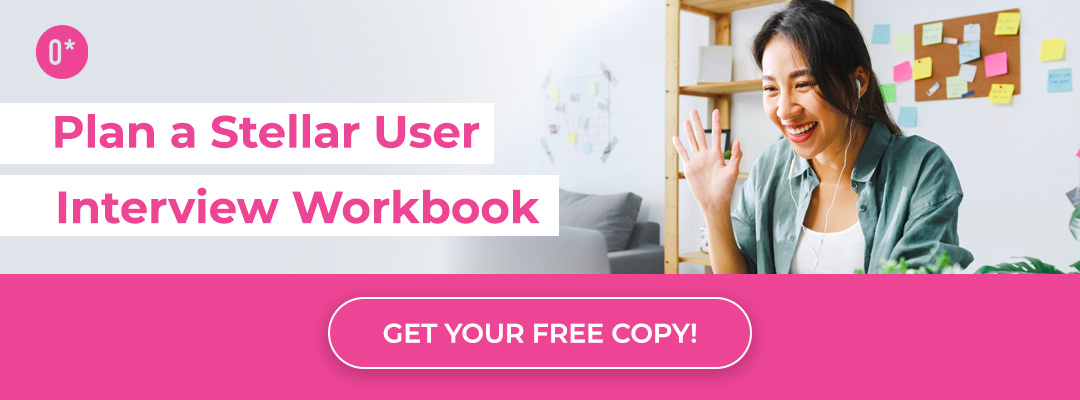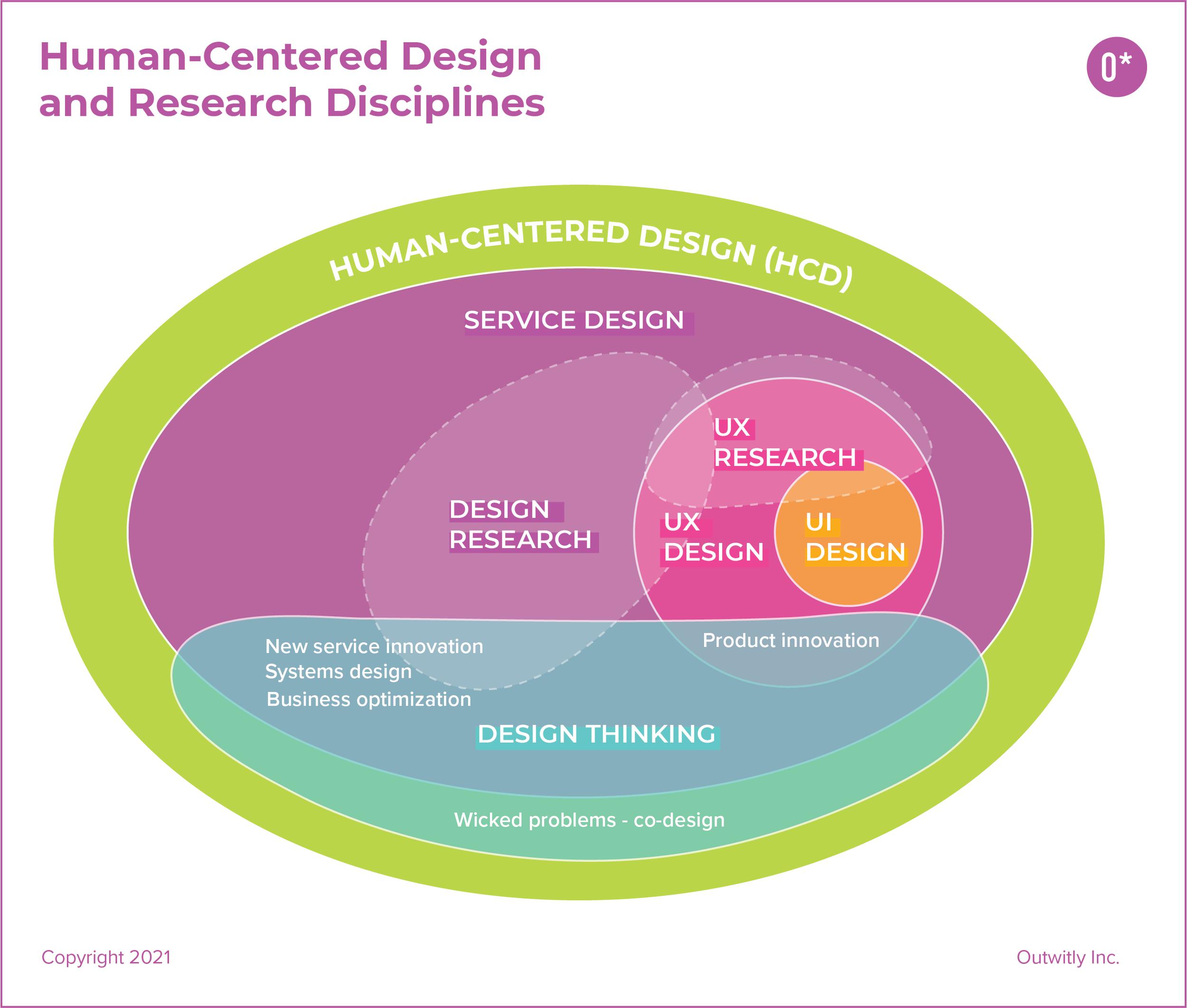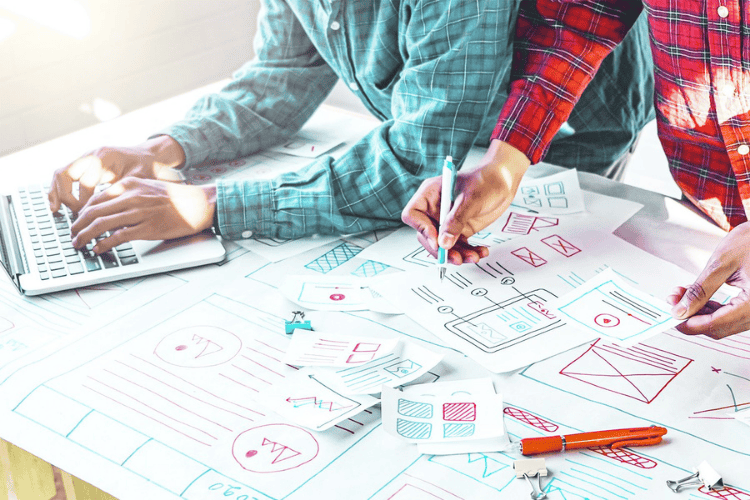We are often asked what the difference is between UX and UI design, service design, customer experience (CX), human-centered design, design thinking, design research, UX research, and design strategy. How is anyone supposed to know what the difference is and what to ask for when hiring for a new position, looking for an external firm, or trying to learn about the field? To be honest, it’s sometimes even confusing for us (who have been working in the field for over a decade!) to describe the nuances and differences between all of the approaches and processes out there. There is so much jargon in the world of design, it’s hard to keep track of what everything means!
So we decided to create an all encompassing guide with definitions for you (and us).
In today’s blog post, we’re breaking down:
-
Definitions of Human-Centered Design (HCD), Design-Thinking, User Experience (UX) Design, User Interface (UI) Design, Service Design, and Design Research
-
A helpful diagram showing the similarities and differences between a few of the design approaches
-
A few case studies that break down when and why we would use each method
Let’s get into it!
Industry Definitions
We’ve scoured the web and come up with our own definitions and descriptions for each of the practices, approaches, and methods commonly referred to in design.
Human-Centered Design (HCD)
Human-Centered Design is a creative and empathetic approach to problem solving that starts with understanding the people at the centre of the product or service you’re designing. It’s a process that starts with the humans (users, customers, stakeholders) you’re designing for and ends with new solutions that are purpose-built to suit these people’s needs. HCD is all about cultivating deep empathy for the people you’re designing for through research (often design research — see definition below). After all, the best designs are created with real people at the forefront!
Design-Thinking
Design Thinking is a design process that considers the needs of people (desirability), the possibilities of technology (feasibility), and the requirements of the business (viability) in order to find innovative solutions to complex problems. Design thinking is iterative, creative, and collaborative — it uses aspects of human-centered design (such as building empathy for users), concept design (finding multiple solutions), and the triangulation of many different perspectives to come up with unique solutions. Design Thinking has the potential to help reinvent just about anything, from climate change to homelessness, to product innovation.
User Experience (UX) Design
User Experience entails a user’s end-to-end experience with a product, service, or company. User Experience Design involves a series of processes that explore a user’s behaviours, pain points and needs, to create an ideal product that addresses those needs while accomplishing business goals within the defined technical constraints.
UX Design considers the entire process of creating and integrating a digital product or service, including aspects of usability, enjoyability, and function. There is an entire story that begins before the device is even in the user’s hands. UX designers don’t just focus on creating products that are usable, they concentrate on many other aspects of the user experience, such as pleasure, efficiency and fun, too! UX designers start with the “Why” before determining the “What” and then, finally, the “How” in order to create products that users can form meaningful experiences with.
User Interface (UI) Design
User Interface Design is a process focused on the look and feel of interfaces within software or a computerized device. UI Design includes everything the user engages with, such as images, icons, typography, colour, buttons, visual hierarchy, text entry fields, layout, and more. UI Design is one component of UX Design that considers the aesthetics of the product. We broke down the differences between these two types of design practices in a recent post.
Service Design
Service Design is the design of systems that encompass users, service providers, business processes, and logistics. It is a method for designing experiences that reach people through many different touch points, and that happen over time. Services are all around us, some examples of services that could benefit from service design might be the process of renewing a driver’s license or getting a mortgage from a financial institution. Service design uses some of the same methods, tools and activities of Design Thinking to help make services more useful, usable, efficient and desirable. We discuss some of the powerful mapping tools used in service design in our recent blog post!
Design Research
Design Research refers to research that is conducted for the purpose of informing design decisions. It most often involves qualitative research with end-users and customers such as in-depth interviews, observations, diary studies, and more. Design research can also involve secondary research such as literature reviews, environmental scans, and trend analysis to inform the qualitative research efforts and provide new areas of interest and inspiration for the design. Ultimately, the focus of design research is on understanding user’s pain points, behaviours, needs, and goals in order to highlight areas of innovation and improvement of a specific product or service.
Still craving more of the nitty gritty on the different design and research roles?
Head over to our Instagram page!
View this post on Instagram
Diagram: Intersection of Design Approaches and Processes
Whoa! That’s a lot of jargon to take in… we know! To help you understand how all of these approaches and processes intersect, we created a visual that depicts how HCD, design thinking, service design, design research, and UX design differ and overlap.
Case Studies of UX, Service Design, HCD, and Design Thinking
We love to pair a strong description with a detailed example! It helps to tell the entire story to really hit the concept home. Here are three different examples of case studies we’ve worked on, each of which pertains to a different design process. However, notice how each of the case studies combines many of these approaches and processes, using them at different stages of the work.
Example #1: Reimagining the Adult Education Experience
Methods/Approaches Used: Human-Centered Design, Service Design, and Design Research
Outwitly worked with a provincial department of advanced education. Using human-centered design we reimagined the delivery of adult education (and it was epic!).
Our Challenge: The existing adult education model was not meeting the complex needs of the individuals it was intended to serve. Many adult learners experience socio-economic hardship, are geographically dispersed across rural areas, have full or part-time jobs, AND care for children in their household. The instructors and educators became discouraged by the lack of consistency in the province’s adult education model. Specifically, resources weren’t being allocated equally and there was no consistency in the curriculums offered from organization to organization.
Our Goal: To understand the needs and pathways of adult learners, as well as the challenges faced by education service providers who were delivering the curriculum. We needed to seek opportunities for improvement in the current system and insights that would inform a clear and consistent program model.
Our Process: To reimagine and develop new and exciting adult education programs, we needed a deeper understanding of current practices. By applying a human-centered design approach and conducting design research, we were able to engage with learners, government stakeholders, and service providers to better understand their needs, wants, frustrations, and motivations. This was also considered a service design project because we looked at not only the learner’s experience, but also the “behind-the-scenes” processes and service provider needs for delivering adult education.
To accomplish this, we undertook ethnographic research with over 100 learners, instructors, administrators, and government stakeholders. This included:
-
5 days of contextual observations in the classroom;
-
A discovery workshop with government stakeholders and partners;
-
A two-week diary study with 18 adult learners;
-
A discovery and validation workshop with service providers;
-
40+ in-depth interviews with instructors, administrators, tutors, and current and potential adult learners representing 150 adult education organizations in the region; and,
-
Two days of co-design workshops with service providers and stakeholders to envision a new adult learning program model.
The Impact: Through this work we were able to synthesize these findings into a 6-Step Action Plan for adult education moving forward. We determined that more awareness and communication were needed to increase enrolment, that learner intake and assessment techniques needed to be more consistent across the province, and that clearer pathways, milestones, and certificates aligned to learner goals were needed for current adult learners who wanted to progress from program to program.
Based on the findings in our Insights Report, our client was able to seek a 26% boost in provincial government funding to help service providers improve the adult learning experience.
Example #2: Co-creating the Future of e-Learning in Canada
Methods/Approaches Used: Design Thinking
Outwitly partnered with Employment and Social Development Canada’s Office of Literacy and Essential Skills (OLES) to facilitate a co-design workshop where participants generated concepts for a holistic eLearning solution. This solution would offer consistent essential skills assessment and learning resources to help jobseekers, workers, and employers across the country.
The Challenge: Previously, no eLearning platform existed at the federal level for adult Canadians looking to develop essential skills as part of labour market programs and services. All previous solutions were managed individually at the provincial level, and none offered a holistic online solution for both learning and assessment.
The Goal: Understand the needs and goals of adult learners, identify roadblocks and challenges, and generate design concepts and recommendations for a “one-stop shop” eLearning Solution.
The Process: We used design thinking to facilitate a dynamic two-day Design Jam workshop that brought together 25 adult education leaders in government and industry from across Canada.
We divided the group into teams, and we asked that participants step outside their comfort zone to embrace ambiguity and trust the process in order to fully understand the problem and welcome new and “crazy” ideas.
We created interactive exercises to uncover participants’ hopes and fears, identify user groups, understand and depict user learning journeys, and build a set of learner proto-personas. These exercises enabled participants to gain empathy for and better understand Canadian adult learners. Together we developed a set of guiding North Star Principles, Key Goals, and Design Concepts for the future of eLearning.
The Impact: Insights and recommendations from the Design Jam Workshop Report enabled OLES to seek support from the Privy Council Office’s Impact Canada Initiative, providing substantial support in the design, delivery, and development of an eLearning Solution
Example #3: Making the Journey for Child and Spousal Support More Human
Methods/Approaches Used: HCD, Service Design & UX Design
Leading the complete redesign of a Minimum Viable Service (MVS) for citizens seeking child and spousal support.
The Challenge: The online portal for this service, which served over 30,000 citizens, was extremely outdated and clunky. Users were frequently unable to access very basic details and information about their own case. This led to a high volume of unnecessary calls to case workers and staff, which in turn prevented staff from having the time to manage their more difficult cases. As a result, fewer payments and transactions were being made to citizens in general.
The Goal: Gain a deeper understanding of the needs and motivations of the citizens and case workers, as well as their workflows and processes, in order to offer innovative feature ideas and design a new online minimum viable service (MVS).
The Process: We began by holding a full-day discovery workshop with stakeholders and key staff to better understand the current state and develop a collaborative vision for the future. Several days of onsite contextual observations at the call centre and 35+ in-depth interviews were conducted with staff and citizens. We developed service blueprints, journey maps, an ecosystem map, two Insights reports, and a 5-Step Action Plan, all of which identified requirements for an improved online service and insights for how to better on-board citizens and improve their experience. Following this, we moved into the UX design of the MVS —moving from low-fidelity to high-fidelity mockups, building prototypes, conducting usability testing with real users, and working closely with development to bring the MVS to life.
The Impact: Citizen adoption of the new online portal has continued to grow with each passing month, with thousands of citizens now successfully onboarded. Approximately 75% of users are accessing the service on their mobile device —an incredible transformation that has allowed citizens to more conveniently manage and view their personal case information. This government department also reported that the new system has allowed them to dramatically increase service levels to citizens by reducing the volume of calls and contact points to case workers and staff. This has positively impacted their entire unit, empowering staff to do their work much more effectively, with more time to manage more serious cases and issues.
To wrap up…
We know how confusing it can be to grasp all of the different roles within this industry! We’d consider ourselves the pros, and yet sometimes, we feel lost too! Hopefully this all-in-one guide to the navigating service design, UX design, and human-centered design helps clear things up a bit. And remember, if you are still feeling stuck on hiring for a new role within your organization or getting started with the design process in general, we’re here to help!
Resources we like…
The Principles of Service Design Thinking
The Non-Designer’s Guide to Hiring into UX
Related Posts
UX vs. UI: How your product looks isn’t the same as how it works
Design Research Tools: Customer Journey Maps vs. Service Blueprints






